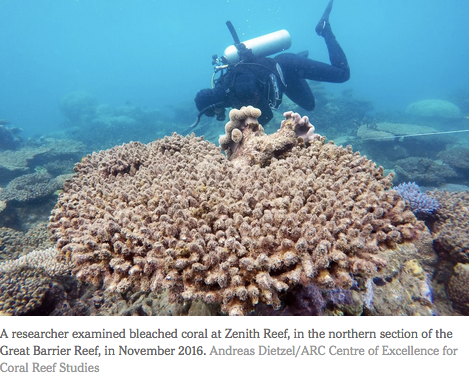Before we call rockfish, shrimp and crab “dinner,” some of these species call coral reefs “home.” But those reefs, home to a quarter of all marine fish species, are now increasingly threatened as rising ocean temperatures accelerate a phenomenon known as coral bleaching.
Large-scale coral bleaching events, in which reefs become extremely fragile, were virtually unheard-of before the 1980s. But in the years since, according to a study published Thursday in the journal Science, the frequency of coral bleaching has increased to the point that reefs no longer have sufficient recovery time between severe episodes.
Jelle Atema, a professor of biology at the Boston University Marine Program who was not involved in the study, said the effects of more frequent bleaching events were very difficult to predict because of the complex networks of dependencies within reefs. But he said they could be devastating.
“When coral dies, it affects the shelter and food that sustain fish, lobsters, shellfish, worms, etc. The same happens in a rain forest. When the trees die, the animals and plants that have developed over millennia die with them,” he said, before adding an analogy. “When a country is ravaged by war, people die and migrate.”




